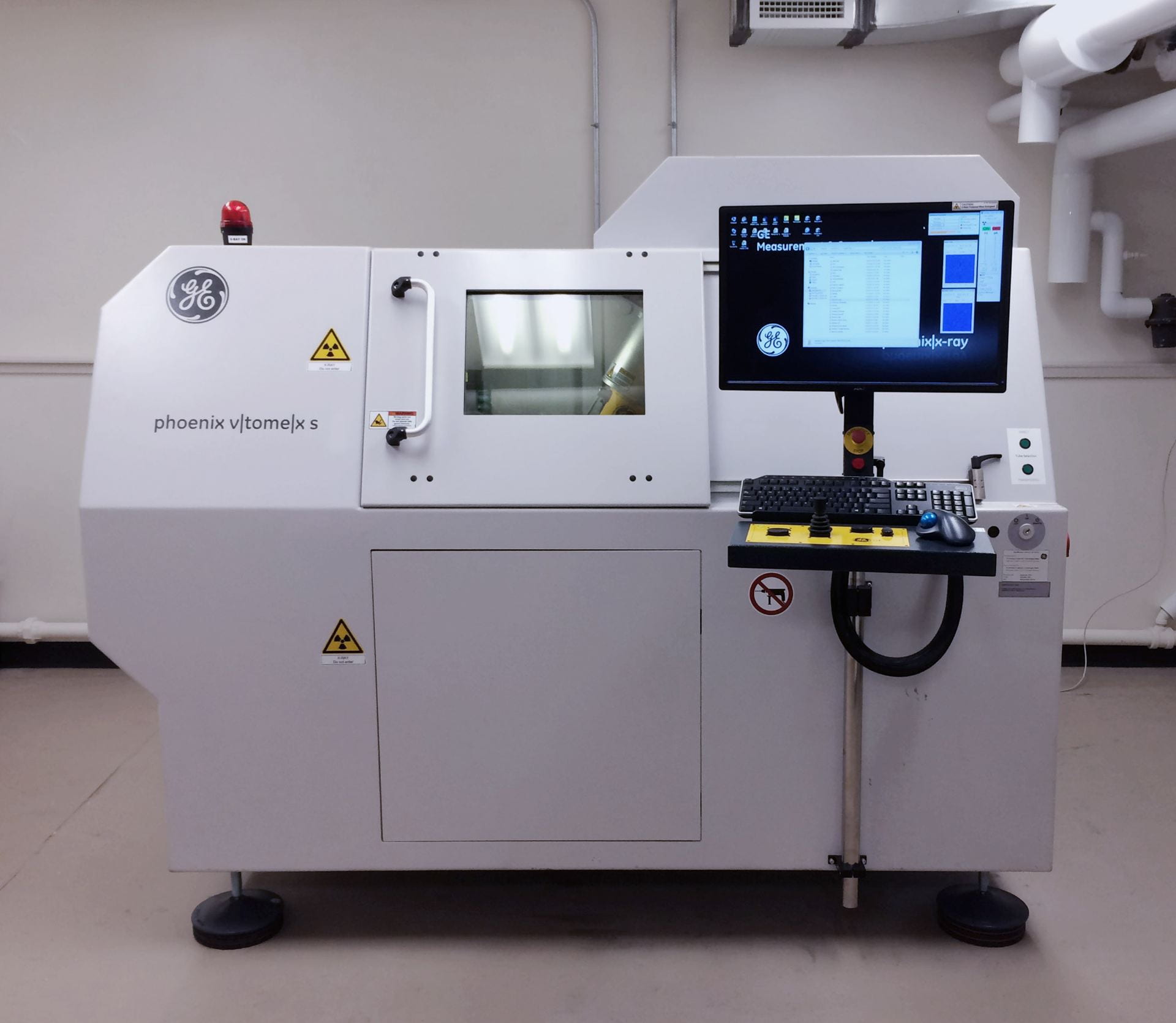UChicago PaleoCT

The University of Chicago PaleoCT is a dual tube micro X-ray computed tomography (CT) scanner from GE. It is equipped with a 180 kV nano-focus and a high power 240 kV micro-focus CT tube. This setup allows us to scan very small specimens with high resolution using the nano tube or dense fossils using the high power tube.
The PaleoCT scanner is located in Culver Hall, under the direction of the Luo Lab. The PaleoCT lab opened in the summer of 2014 to serve the faculty, students, researchers and staff in the Biological Sciences Division (BSD), as well as users from outside UChicago. PaleoCT is a facility under BSD Office of Shared Research Facilities (OSRF), but the account management and operational support are by Department of Organismal Biology and Anatomy (OBA). Thus the account procedure for using PaleoCT may be different from procedures for other facilities of OSRF.
Each year a small number of students associated with different UChicago labs are certified to operate the PaleoCT scanner. Outside researchers interested in using the services of the PaleoCT should contact Dr. Luo and Ms. April Neander for appointment and pricing information.
Frequently Asked Questions
How do I make an appointment? How far in advance should I make an appointment?
You can make an appointment by contacting April Neander and Dr. Zhe-Xi Luo. Appointments should be made at least two months in advance.
What are specimen size and weight restrictions?
The PaleoCT scanner is a GE v|tome|x scanner that can capture any specimen that fits within a 9.5in (24cm) diameter, 9.5in (24cm) high cylinder in a single scan. The scanner has a feature, however, that allows a 15in (38cm) tall object to be captured by taking multiple scans and stitching them together. The machine can physically fit a specimen up to 20in (50.8cm) in height and 14in (35.6cm) diameter, though such a specimen could not be scanned together. It should be noted however, that the resolution (voxel size) of a scan is dependent on the size of the specimen and its mounting structure. The smaller the combined specimen and mount is, the higher the resolution can be. The maximum weight the scanner can allow is 22lbs (10kg).
How much does scanning cost?
External Users: $120 per scan hour (starting 1 July, 2024)
This includes standard specimen pickup and returns to and from the Field Museum, basic mounting of specimens, scan setup, scan time, and basic reconstruction. The client will receive the raw scan data, the reconstructed image stack, and an informational sheet with parameters. Requested work outside this typical scope may result in additional charges.
Internal Users and UChicago Affiliated External Users: $70 per scan hour (starting 1 July, 2024)
This rate applies to PIs who are UChicago faculty or who are based at another institution but are also UChicago affiliates. This rate applies when the PI has a trained user scan for them. If the PI requires a staff person to scan their samples, an additional fee of $30/hour will be applied.
All rates shown here are effective as of 7/1/2024.
How can I pay for scans?
Clients from outside the University of Chicago will be emailed an invoice and can pay with check or money order after the scan is completed. Unfortunately, we cannot send invoices for scans in advance.
What data will I receive and how do I use it?
The default data format is a stack of 16 bit Tiff images. All scans come with an informational scan sheet in PDF format which lists the scan resolution and parameters and it is highly recommended that you always keep a copy of this file with the scan. We can also provide the data in DICOM format, which is more common among medical scanners. The raw projection files and other associated metadata files will also be provided, but can be very large and is not required for segmentation, however having a backup is recommended.
There are many options for segmentation software, but most of them require a specialized computer with robust graphics card and RAM. Some popular free software are 3D Slicer, ORS Dragonfly, and DRISHTI. Some popular paid options are Materialise Mimics, VG Studio Max, and FEI’s Amira and Avizo. Segmentation is not part of our standard service and is the responsibility of the client.
Can I be trained to use PaleoCT?
Graduate students, postdocs, or staff members are eligible if they demonstrate a strong need, have no one else in the lab that can scan the specimens, and are authorized by their Lab PI and/or their supervisors. There are many responsibilities that come with training, including scanning for others in their lab, doing an annual review, and managing and archiving their data for their lab and loaning institutions.
Training will be prioritized for those who plan to use the machine consistently for a longer period of time. Trained users who have not used the scanner in 6 months will be put on the inactive list and their accounts will be re-activated after a review session.
The PaleoCT scanner is a heavily used piece of equipment and cannot accommodate a large number of users. In addition, limiting the use of the lab to a small number of more active users promotes familiarity and practice with the equipment that results in better scans and better maintenance of the equipment.
If you are interested in training, please contact April Neander to assess your eligibility.
Will PaleoCT backup my data?
The clients will receive their CT data immediately after scanning and we backup the data for six months. This service may be subject to change without warning, so it is highly recommended that you keep secure backups of your data.
Introduction to PaleoCT Video
Contact Information
Zhe-Xi Luo
Principal Investigator
(773) 702-7816
zxluo@uchicago.edu
April Isch Neander
Lab Manager
(773) 702-4715
aisch@uchicago.edu
